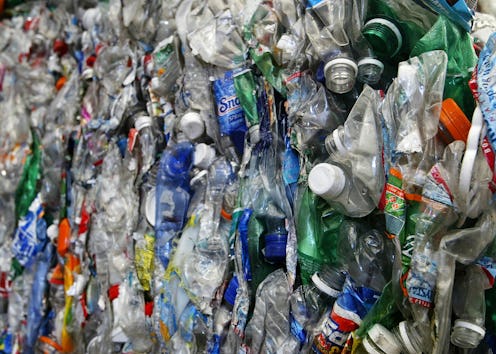
If you pay attention to what's in the products you use in your home, then you've probably heard that it's best to use BPA-free plastic and food packaging. If you're not in the know and you're wondering what is BPA, the Mayo Clinic defined it as bisphenol A, "an industrial chemical that has been used to make certain plastics and resins since the 1960s." BPA is used to harden plastic, so products made with BPA, like plastic containers, baby bottles, and the lining inside of food and beverage cans, are reportedly stronger than other products. But why does this matter?
Whether or not BPA is harmful to humans has been the subject of controversy for decades. "Some research has shown that BPA can seep into food or beverages from containers that are made with BPA. Exposure to BPA is a concern because of possible health effects of BPA on the brain, behavior, and prostate gland of fetuses, infants, and children. Additional research suggests a possible link between BPA and increased blood pressure," Dr. Brent A. Bauer wrote for the Mayo Clinic.
While some studies claim it's not dangerous if you're exposed minimally, others conclude that BPA free is the only way to be. Not so fast. If you're already using BPA-free plastic, additional studies have found that BPA-free plastic and food packaging isn't necessarily safer, because it can contain other synthetic materials that could be harmful to humans. Some BPA-free products use substitutes called BPS and diphenyl sulfone, which, according to a September 2018 study published in the journal Current Biology, had adverse effects on pregnant mice and their offspring that could potentially last for generations.
But how do these potentially hazardous chemicals get out of your water bottle and into your water? The National Capital Poison Center explained that BPA can seep out of products and leech into food and drinks if containers made with BPA are heated. Even if you never heat plastic, if you drink out of plastic bottles and you leave them sitting in the sun, BPA is more likely to leak into your beverage than if it's never exposed to heat. That being said, the center said repeated exposure over a number of years is necessary for BPA to be potentially harmful.
There is still some debate over whether humans should be concerned about these health effects. A government-funded non-peer reviewed study draft report, released in February 2018 by the National Toxicology Program, concluded that the small amount of BPA released from food packaging and plastic is not harmful to your health, according to findings posted on the U.S. Food and Drug Administration's website. What's known as a CLARITY Core study, which is peer-reviewed, was released regarding the findings in late 2018. The study came to the same conclusion, and is expected to be published in a scientific journal in early 2019.
Overall, more research is necessary to confirm whether or not BPA and BPA-free alternatives are safe, according to researcher Patricia Hunt of Washington State University, who worked on the Current Biology study. While the government and the CLARITY Core study claim BPA is safe, it's really up to you to decide what's best for your health until further studies are conducted.
If you're worried your water bottle is trying to kill you, switch to glass or stainless steel until there's a definitive answer on the safety of BPA and other materials used in plastics and food packaging. In addition, don't put plastic in the microwave, and avoid pre-packaged foods as much as possible.